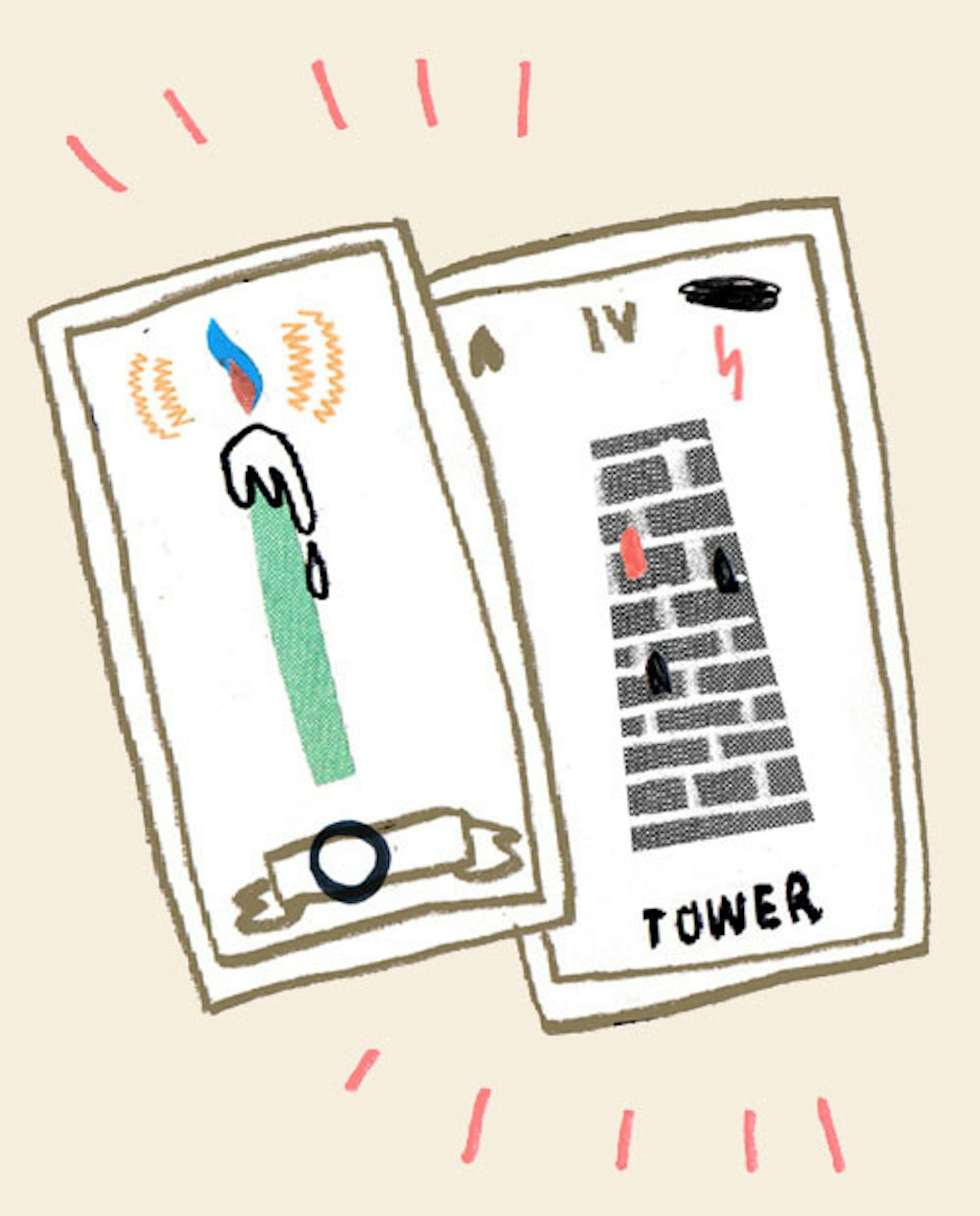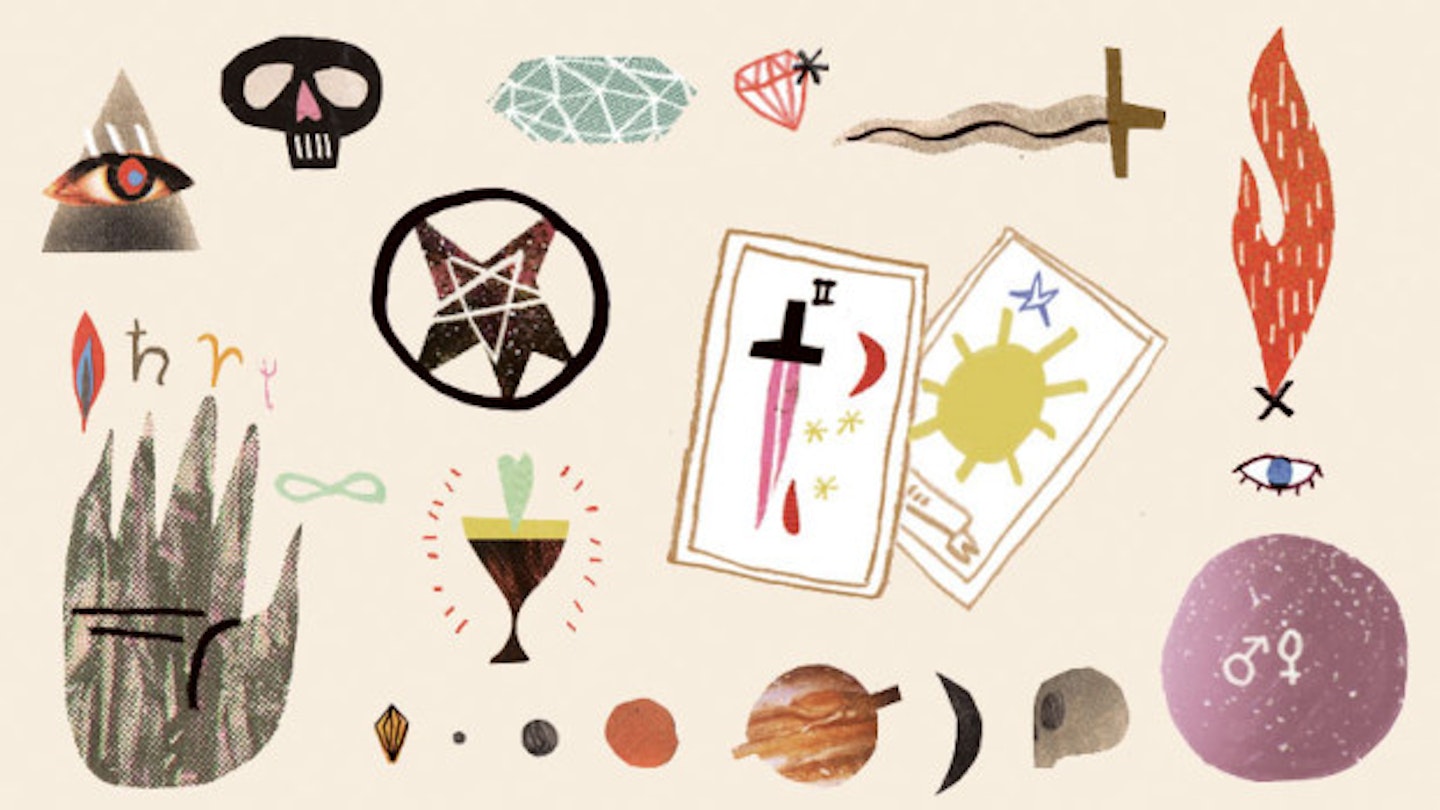As with many things in my life - like my preference for the colour black and a life-long appreciation of the work of Neve Campbell - my interest in the esoteric all started with The Craft. It’s hard to overstate the impact this film had on me and my mates in year six at St James’s Primary school - we became completely obsessed with witches. When some of the girls were off making daisy chains in the school field, we were being hauled up in front of our head mistress for trying to ‘invoke the spirits’ using our lunch boxes and whatever ‘offerings’ we could find hidden behind the school shed (if my memory serves me correctly, it was a caterpillar and an already dead earwig). When you bear in mind that my primary school was a fairly strict and, crucially, Catholic, you can see why we had caused so much alarm. You try and explaining to a nun that you're not actually a satan worshipper and that you just think Nancy’s outfit is really cool. It’s a fucking nightmare.
My Craft obsession has (somewhat) subsided in the sixteen years since primary school, but the hangover from that first initial obsession with the occult is that I’ve been into tarot and palmistry ever since. This is much to the annoyance of my more cynically (or rationally, depending on how you look at it) minded friends - who probably view my little hobby as an eccentricity too far - but the thing about palmistry and tarot is that, whether you actually buy into it or not, they’re a brilliant way of focusing your mind and getting to the route of how you actually feel about a certain situation. When my mates come to me with a problem they don’t really know the answer to and I give them a reading they think is total bollocks, at least they’re a bit more aware of how they actually feel about the situation. It’s win win!
So, whether or not you’re cynically curious or you’ve always fancied yourself as something of a soothsayer, here’s a beginner’s guide to tarot and palmistry from Roxanne Maguire, a tarot reader with over 35 year’s experience. Incidentally, she once told me that I’m likely to marry a much shorter, hairy man of Latin decent. If I can get over that devastating piece of news and still buy into what she’s saying, you should at least give this a bit of a read.
Palmistry
![occult_debrief_extra2[1]](https://images.bauerhosting.com/legacy/lifestyle-legacy/2c/c92c2/c0653/b7133/81d7a/f7438/bca63/occult_debrief_extra2[1]_500x620.jpg?auto=format&w=1440&q=80)
‘There is so much to palm reading, but a good place to start for beginners is with the major lines,’ Roxanne tells The Debrief. ‘The first thing you should do is pick a hand. For insight into your future life you should pick your non-dominant hand (so your left hand if you’re right handed and visa versa) and for anything on your present or past life look to your dominant hand. Then you should identify the four major lines. The heart line runs horizontally across the top of your palm; the head line crosses your palm horizontally through the middle; the life line curves around your thumb and the fate line runs vertically from the bottom of your palm to around the middle.
‘The two lines that most of my clients seem most interested in are the heart and life lines, so here’s a basic guide to interpreting those. The heart line gives you an indication of all the emotions and situations associated with love. If your heart line starts directly under your index finger, that indicates contentment in your love life. If the line begins directly below your middle finger, that implies a more selfish outlook when it comes to matters of the heart. If your line begins right between the middle and index finger then you probably trust others in love far too easily. If your line is straight and short, you will likely have a high sex drive but aren't that fussed with romantic gestures. If it points downwards and touches your life line, then you’ll have your heart broken easily. A long and curved heart line indicates that you can freely express your emotions and one which is straight and parallel to the head line shows you have a strong and straightforward handle on your emotions.’
‘Your life line will tell you about the quality of your life. If it is close to your thumb, you’ll likely be tired a lot whereas, if it’s curvy, you’ll have a lot of energy. A long and deep line shows you’ll have a long and healthy life filled with vitality whereas a short and shallow line shows you are too ready to let other people make the rules in your own life. If it looks like a semi-circle, you have a lot of strength and enthusiasm and a straight line which is close to the edge of your palm shows that you often hold back when it comes to love. A circle in the line implies an injury and break shows a sudden change in lifestyle, such as an accident, illness or heartbreak.’
Tarot

‘The first thing you have to do when you start reading tarot is pick your deck,’ Roxanne explains. ‘There are so many to choose from and it’s important to pick one that you like aesthetically and feels like “you”. If in doubt, the Rider Waite deck is a really good all-rounder and is very clear in both its imagery and structure. Then - and i’m afraid there’s no short cut with this - you basically have to do your homework and find out what the cards mean. There are some great books and online tutorials to help, but it’s also important to use your instincts with them and really look at the cards. One of my clients, for example, gets a very strong connection with a friend of her’s from the Star card and, whenever that comes up unexpectedly in a reading, there’s always a connection with the subject and that friend.
‘Most decks have 78 cards in them; 22 Major Arcana and 54 minor Arcana. The Major Arcana represent the deeper, more meaningful and more spiritual parts of your life and include cards like ‘the lovers’ ‘the fool’ and ‘death’. They are signifiers to events and people that are meant to be taken more seriously than the Minor Arcana cards which are more open to interpretation. The Minor Arcana consist of four “suits” just like paling cards. The pentacles deal with work, success and money issues; the wands deal with more spiritual issues; cups deal with more emotional issues and swords represent negative issues and loss.
‘When you’re first starting out, I think it’s easier to start with the simple spreads like the three-card spread, which is great for yes and no questions. You should shuffle the cards whilst thinking about the question deeply and split the deck, laying three cards side-by-side horizontally. The first card will represent the past issues affecting the problem, the second the current forces influencing the problem the the third will show the future outcome.’
So, armed with those few basic tricks, you can now the skills to have a little look into your future. At the very worst, it’ll be something fun to do at the pub.
Like this? Then you might also be interested in:
Are More 20 Something Women Turning To Witchcraft? We Asked An Expert
'Shy Goth Hair' Is The London Fashion Week Beauty Trend You'll Want To Get On Board With
Here's Some Absolutely Terrifying True Stories To Get You In The Mood For Halloween
Follow Sophie on Twitter @SophieCullinane
Illustrations: Agata Krolak
This article originally appeared on The Debrief.
